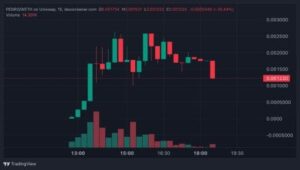Last updated:
 Why Trust Cryptonews
Why Trust Cryptonews

U.S. spot Bitcoin exchange-traded funds (ETFs) have recorded net outflows exceeding $1 billion over a seven-day period from August 27 to September 5.
Fidelity’s Wise Origin Bitcoin Fund (FBTC) led the downturn, with $374 million withdrawn over the week, while Grayscale’s Bitcoin ETF (GBTC) followed closely, seeing $227 million in outflows, according to data from Farside Investors.
BlackRock’s iShares Bitcoin Trust (IBIT), the largest Bitcoin ETF globally, witnessed its second-ever outflow since its launch in January, losing $13.5 million on August 29.
IBIT ETF Inflows Stagnate
Despite strong inflows in the weeks leading up to this period, IBIT saw no further activity during these seven days.
Other U.S. Bitcoin ETFs also faced losses, with WisdomTree’s Bitcoin Fund (BTCW) being the sole exception, showing no significant inflows or outflows.
The decline in Bitcoin ETF activity has coincided with a dip in Bitcoin’s price, which dropped over 4% last week, currently trading around $56,500.
Analysts attribute the price drop partly to the persistent ETF outflows and increasing concerns over global market instability.
On Thursday, September 5, Bitcoin funds saw a $211 million outflow, the fourth-highest daily loss since May 1.
Amid these market challenges, Bitcoin has struggled to break through the $65,000 resistance level, creating selling pressure, especially for short-term investors.
Meanwhile, the Fear and Greed Index remains in “fear” territory, reflecting growing concerns over a potential recession.
Additionally, Ethereum spot ETFs also saw outflows, with Grayscale’s Ethereum ETF (ETHE) losing $7.39 million on September 5, while its mini ETF experienced a slight inflow of $7.24 million.
As reported, digital asset investment products faced significant outflows last week, with a total of $305 million exiting the market.
The trend reflects a broader wave of negative sentiment that has gripped the cryptocurrency market across various regions and providers.
The primary catalyst behind this downturn appears to be stronger-than-expected economic data from the United States, which has reduced the likelihood of a 50-basis point interest rate cut by the Federal Reserve.
Bitcoin Activity Reaches Three-Year Low
The Bitcoin network has experienced a significant drop in activity, reaching levels not seen in three years.
According to onchain analytics platform CryptoQuant, a general sense of “disinterest” is affecting the crypto market, with Bitcoin transaction volumes notably declining.
In a recent Quicktake blog post, CryptoQuant said that active addresses on the Bitcoin network, which had reached nearly 1.2 million at their peak in mid-March, are now down to 838,000.
In late August, this figure dropped even further to just 744,000, marking the lowest daily tally since 2021.
“The total number of active addresses on the Bitcoin network hit new lows in 2024, reaching levels similar to three years ago when Bitcoin was trading at around $45,000,” wrote CryptoQuant contributor Gaah.
He added that fewer active addresses indicate a decline in network activity, meaning fewer transactions are taking place, which may signal a lack of interest in using the network.





















